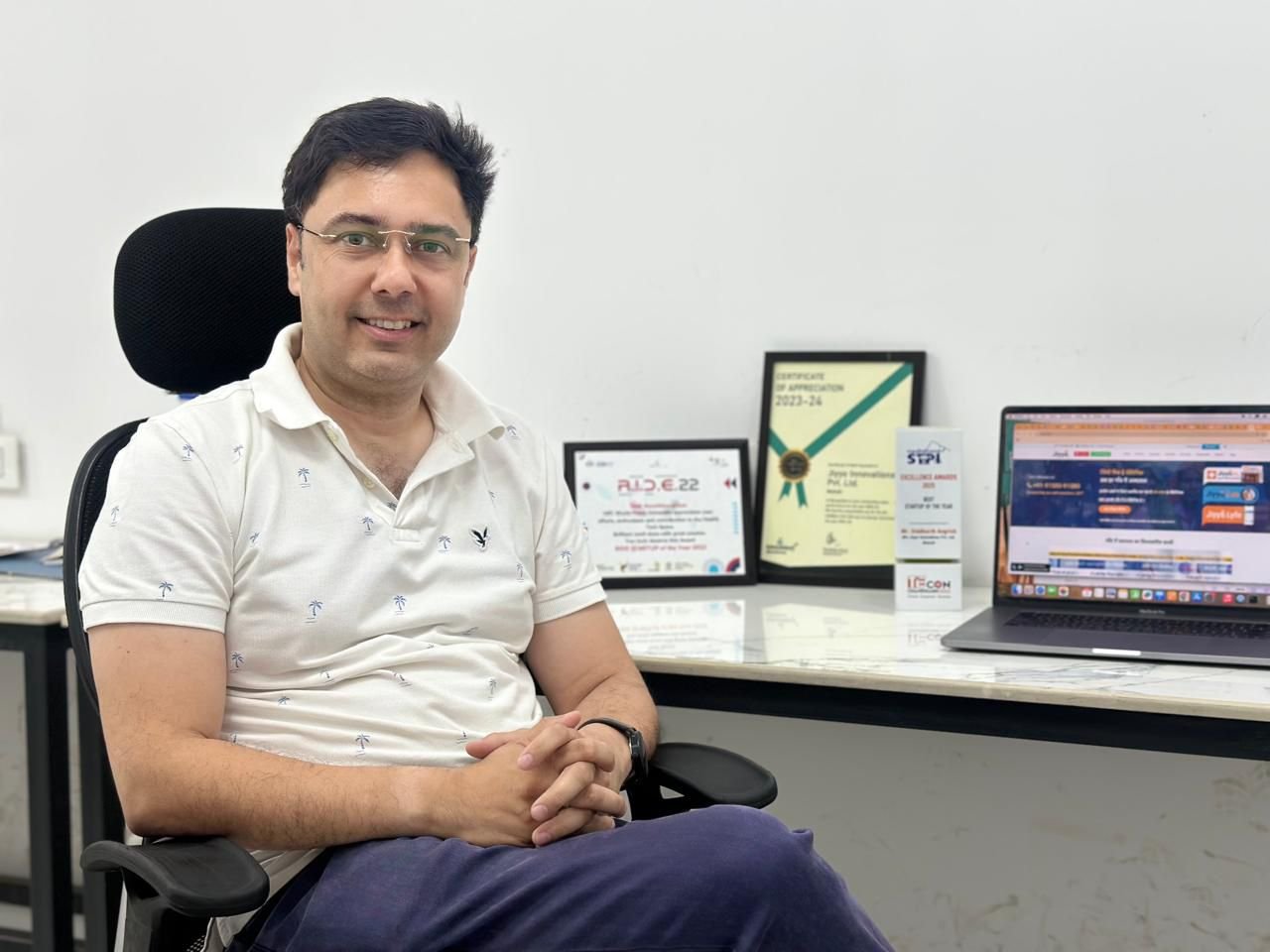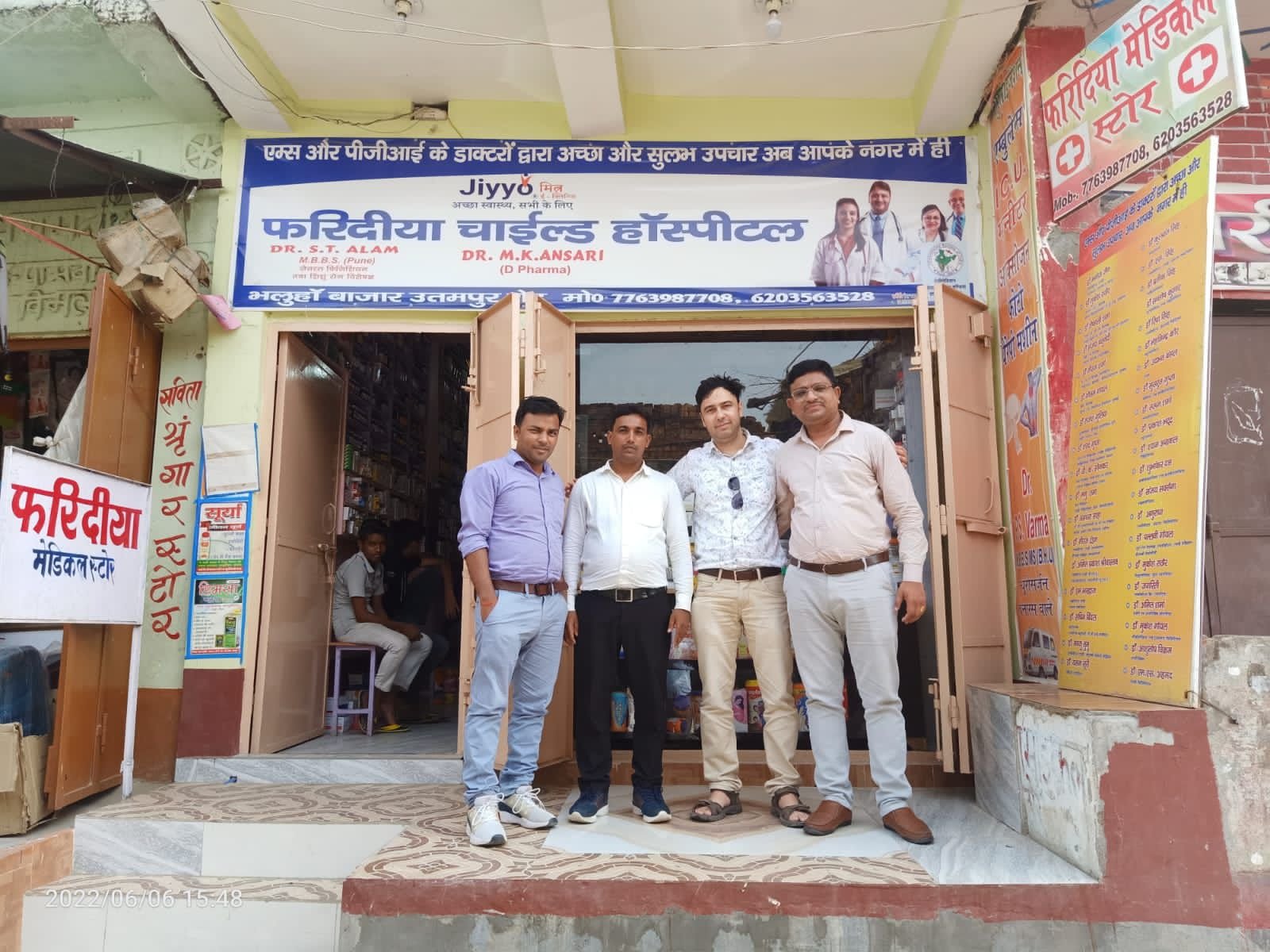Low Capex, High Scalability: Can Jiyyo’s Model Solve India Rural Healthcare Puzzle?
By Arunima Rajan
Most entrepreneurs are reluctant to enter rural healthcare. Why? There are few specialists in Tier-2 and -3 cities, leave alone villages. Mobile telemedicine platform Jiyyo thinks there’s a workaround: telemedicine delivered through local pharmacy partnerships. But can it work in places where people trust only their neighbourhood doctor, and the village population barely crosses 10,000? In this interview with Arunima Rajan, Jiyyo CEO Siddharth Angarish explains why most rural telemedicine startups fail and what he’s doing differently.
Let’s start with the basics. Suppose I’m a patient living in a remote village, and I walk into a pharmacy that’s a Jiyyo partner can you walk me step-by-step through what happens next? How exactly does your model bridge the distance between specialist care and a rural patient?
Actually, Jiyyo’s concept is applicable to any small pharmacy which is located about 60 minutes or more away from any kind of specialist. Thus, this includes villages just 20-30 km away from cities and even urban villages like we see in parts of Delhi.
Steps to an e-consultation in a Jiyyo e-clinic:
A patient visiting a pharmacy discusses their ailment with the pharmacist.
Based on the nature of the complaint and patient history, the pharmacist may suggest consulting a specialist on Jiyyo’s platform.
If the patient agrees, the pharmacist selects a suitable specialist on Jiyyo’s app and sends an e-consult request. Jiyyo’s doctors are available every day of the week from 8 a.m. to 10 p.m.
The pharmacist also adds the relevant patient information in the e-consult request, such as age/gender, symptoms, vitals (blood pressure, body temperature, etc) and medical reports.
The selected doctor receives a notification on his/her mobile phone (via Jiyyo’s app) regarding the request.
The doctor makes a video call request through the Jiyyo app.
The pharmacist receives the video call, introduces the patient and lets the patient talk to the doctor.
After the consultation, the doctor gives the patient a prescription and any other information that is necessary.
If there is a problem regarding doctor selection, doctor availability, understanding the prescription and the follow-up process, Jiyyo’s dedicated relationship managers guide the pharmacist (aka health partner) and the patient through phone/video calls. For example, if the doctor receiving an e-consult request is not available, the request is reassigned to another doctor, keeping in mind the preferences of the pharmacist and the patient.
Once a patient connects with a doctor, the rest of the treatment depends on the medical needs of the patient.
India has seen numerous telemedicine start-ups trying — and often failing — to make rural healthcare accessible. What were some common misconceptions you noticed in previous attempts, and how did you consciously avoid repeating those mistakes with Jiyyo?
Here are some misconceptions most startups and even healthcare experts seem to harbour:
Making a doctor available online is enough to get a rural patient’s attention: This view ignores that healthcare needs a composite solution — doctor + medicines + lab tests + trust
It is difficult to make money from healthcare unless hospital referrals (for costly surgeries) are included in the revenue streams: This view quickly erodes patient trust and increases a startup’s challenges.
Unless you own the clinic premises you will not be able to earn substantial revenue from patient walk-ins: This view causes a startup to make large initial and recurring investments in an individual centre and makes things bleak from a profitability perspective.
You need to earn a large amount per e-clinic per month: This view ignores the fact that a village may typically offers a catchment area of only 5,000-10,000 population with at least two or three other healthcare providers. Unrealistic expectations may cause a startup to mis-prioritise strategic choices at its disposal. For example, in regions with low population and/or high competition, more effort can be put into achieving more revenue per walk-in rather than spending for more walk-ins.
Sticking to a small region before expanding: While starting small makes sense, as telemedicine is a relatively new concept sticking to a small region may backfire as a startup may quickly run out of early adopters. There are only a few people who take risks to adopt new technology for their customers. This is especially low in the naturally conservative healthcare sector.
Rural populations have poor spending power: While relatively rural societies are less affluent than their urban counterparts, more emphasis on this aspect may force a startup to add high-ticket items (e.g., hospital referrals for surgeries) to their revenue streams. This can reduce patient trust and reduce focus on creating a high-volume, low-margin solution which naturally suits the large rural healthcare sector.
So far, we have seen three types of telemedicine startup models for rural healthcare in India. I have tabled them below along with their strengths and weaknesses. In the table below, I have mentioned strengths and weaknesses of each model.
Building trust can be challenging, especially in rural India. How did you persuade local pharmacies and informal healthcare providers — who are naturally cautious — to trust not only your technology but also invest their own money to adopt Jiyyo?
We always kept our messaging simple, which resonated well with local healthcare providers:
Patients of every kind are present everywhere but doctors to treat them are not.
Qualified doctors are generally not present in villages. Nor will the situation change in the foreseeable future.
A local care provider can only benefit from connecting with varied specialists on Jiyyo.
2. We kept building an online repository of patient stories, health partner successes, doctor education webinars, and our teams’ regular outreach programs. Over the years, we have added over 780 such videos on our YouTube channel. This is unmatched by any other player in this segment, funded or unfunded. They help build trust with new and existing health partners that Jiyyo is here to stay.
3. Jiyyo’s six years in this otherwise difficult space has won the trust of many interested but risk-averse pharmacists. These people liked the e-clinic model but did not want to be the first ones to invest in it in their region. After they had monitored the progress of earlier Jiyyo franchisees and Jiyyo’s growth for several months and even years, they felt convinced to make the jump.
4. On a tactical level, to bridge the trust gap in the early days, we had used a local team of salespeople who would make cold visits to set up e-clinics. Once we had a good number of e-clinics running we moved our entire sales team online to reduce costs and were able to retain the e-clinics’ growth rates.
5. From the beginning we ensured we had doctors from Tier-2 or smaller areas on our platform for better interaction with patients and health partners from similar regions.
Siddharth Angarish, CEO, Jiyyo
Your model of choice is asset-light and partnership-driven. Was this purely a financial decision, or does it offer deeper advantages perhaps flexibility or resilience that traditional healthcare infrastructure lacks?
The world of computers guided us here. From my prior experience in distributed computing, I’ve learnt that it is better to solve large computational problems working with thousands of small computers than by building a large super-computer. We view each e-clinic as a small computer which is solving a part of the large rural healthcare problem of India. If we have to invest a lot in each e-clinic, then it may not be possible to set up tens of thousands of them. This asset-light model affords high execution speed. Our goal is to reach over 100,000 e-clinics in India in the next 3-5 years.
We always expected that a few of the e-clinics may not perform well, for several reasons: trust, local competition, personality of the local operator … we realised we may not be able to fix some of those problems in the short term. Instead of getting stuck on a few failures, we designed our system to be fault-tolerant and nimble. As we continue to build Jiyyo, we learn more about how to solve certain problems that we were not able to earlier.
You've asked healthcare partners to pay upfront for equipment, to indicate their seriousness and commitment. Does this requirement, despite its practicality, risk excluding potentially strong partners due to financial constraints? How have you navigated that challenge?
We set up a Jiyyo e-clinic only in a running pharmacy. Our experience indicates that spending Rs 25,000 for business growth should not be very difficult. Over 2,000 healthcare providers have on average spent Rs 30,000 each on a Jiyyo franchisee, most of them being from rural areas of Uttar Pradesh, Bihar, Jharkhand, Madhya Pradesh, Rajasthan and Chhattisgarh.
I do agree that we may be missing out on some good prospective pharmacists due to the investment constraints. However, the supply of interested pharmacists is very good. There are over one million of them. We think we are good for now. We keep re-evaluating our strategies from time to time.
One critical challenge with remote healthcare consultations is ensuring accurate diagnosis without specialists physically examining patients. How does Jiyyo safeguard against diagnostic errors or miscommunication?
That works through a combination of:
Realising that a tele-consultation is not just a video/audio call between a patient and a doctor
experienced doctors
proactive Jiyyo team members (including relationship managers and clinical pharmacists)
Well-trained Jiyyo health partners
Good and frequently revisited SOPs, which include:
Taking patient’s medical history
Checking and recording Patient’s vitals
Following-up on complicated cases
A warm patient care helpline
Comprehensive software stack to handle the nuances of coordination between a patient, doctor, health partner and a relationship manager
Instead of traditional advertising such as billboards or television, Jiyyo relies heavily on platforms like Facebook and YouTube to reach rural pharmacists. Why did you choose this digitally-focused outreach strategy, given that internet connectivity in rural India remains uneven?
From the onset we realised that rural healthcare is a very interesting problem. It offers low margins but extremely high volumes. High volume is achievable only after several nuances are properly handled in catering to individual patients, health partners and doctors.
We understood that billboards and television cannot help. They play an important role only after the base cases have been solved effectively.
We had to go for more economic but effective choices. We have never regretted this. Rather, we know of some startups in this domain who erected billboards in the Lucknow region without having a sound telemedicine software solution. They recently closed operations.
Private businesses usually see rural healthcare as an unattractive financial proposition. How has Jiyyo managed financial sustainability while serving populations with traditionally limited purchasing power?
By ensuring positive unit economics on every transaction made over the Jiyyo platform. As I said earlier, rural healthcare offers low margins but high volumes. We had the conviction that we first needed to arrive at a formula which provides a satisfactory experience to patients, business growth to health partners and additional income to consulting doctors without Jiyyo incurring any loss on a per transaction basis. Once this formula is ready, scaling it up is relatively straightforward. I believe that Jiyyo has maturely spent its first few years in refining the formula by building on its own experiences in the field.
Jiyyo not only provides specialist consultations but also gathers valuable health data from communities previously lacking such insights. How might this anonymised, real-time data influence India’s broader healthcare policy, possibly reshaping our approach to rural healthcare altogether?
If each village of India gets a self-sustaining e-clinic installed locally, this can reduce serious disease burden at India’s tertiary hospitals such as AIIMS and PGIs by over 40 per cent. Even more importantly, this can improve the country’s health index, significantly leading to a more healthy rural population. Lastly, as e-clinics cater to patients in person, lots of useful data can be digitised. This data, when properly anonymised, can open the floodgates for disease and drug research in India, potentially giving a massive fillip to both innovation and GDP growth.
Got a story that Healthcare Executive should dig into? Shoot it over to arunima.rajan@hosmac.com—no PR fluff, just solid leads.




